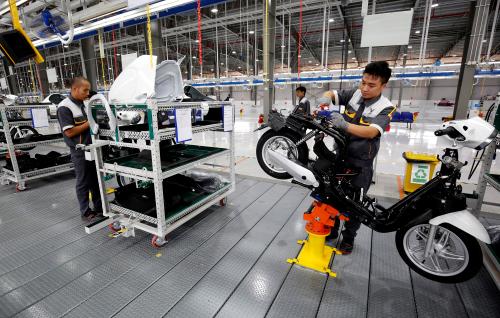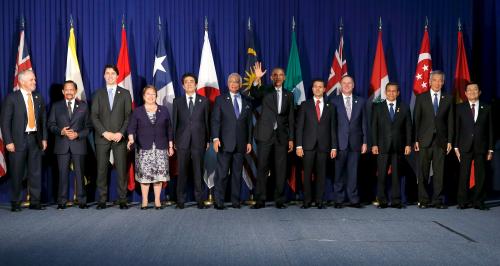Future Development is back again, and we start the new year on a strong note by introducing a new contributing editor. Indermit Gill is professor of practice of public policy at the Sanford School at Duke University, and director of the Duke Center for International Development.
While January is the traditional month for gazing into the crystal ball, it is always dangerous to make predictions, particularly, as the Danish proverb says, about the future. But traditions are traditions, so we invited our guest bloggers to review what waits in store for 2017.
Mostly, the responses are a confirmation of economics as the dismal science. A few highlights to illustrate:
- Economic growth will slow and climate change quicken.
- The first signs of Cold War II (and a probing testing of the U.S. and EU willingness to respond).
- Rising yields will yet again create the specter of a debt crisis, increasing reform pressures on Southern Europe, and testing once again the crisis management abilities of the EU.
- Aid is dead, long live investment.
- Global happiness will fall.
- Inequality in America will rise.
There were a few positives:
- The European economy will improve.
- Universal basic incomes will be introduced in a number of countries.
- Civil wars in Syria, Iraq, Yemen, and Libya will either subside or come to an end.
We believe, however, that there are some reasons for optimism for development in 2017. Our case rests on the idea that short-run economic trends mostly reflect long-term powerful forces that are already in motion, and that have little to do with the known uncertainties of policy changes that many of our guest bloggers are worried about.
So what are these forces? The International Monetary Fund forecasts 4.6 percent growth for developing countries in 2017. This translates into an expected developing country GDP of $74 trillion in purchasing power parity (PPP) terms, 60 percent of the global economy, and an average of $11,560 per capita.
It’s also significant that the steady downgrades to world economic performance that have come from the IMF seem to have stopped. The graph below shows forecasts from successive IMF World Economic Outlooks, from 2009 to 2016. It shows that, after a relatively optimistic view of recovery from the Great Recession, the IMF started to become more pessimistic about growth prospects for developing countries in 2012 and has sequentially downgraded their projections since then.
But between April and October 2016, the projections have stabilized. This could be a signal of better times to come, not just because of the positive trend shown by the projections, but also because the IMF is often behind the curve—slow to recognize the depth of downturns and conversely slow to recognize the strength of upturns. By April 2017, expect to see an upward revision in the IMF forecasts.
Figure 1: GDP growth in emerging markets (percent change in constant prices)
 Source: IMF World Economic Outlook Database, various years
Source: IMF World Economic Outlook Database, various years
The case for optimism also rests on the dynamics created by global growth heavily concentrated in Asia. China, by itself, could add $1 trillion to global GDP in 2017 (almost $1.8 trillion in PPP terms). India, growing faster but with a far smaller base, could add $800 billion in PPP terms.
Continued growth of these magnitudes in Asia will continue to fuel a sharp expansion in the middle class. Globally, the middle class should add 140 million to its numbers in 2017, which means that we might experience a tipping point at the end of 2017 where half the global population lives in middle (or upper) class households, defined as $11 or above per day income in 2011 PPP terms.
2017 may not end up being a great year, but the bar has been set so low by our expert guest bloggers that it will not be too difficult to exceed expectations. That alone should cheer you up.
The Brookings Institution is committed to quality, independence, and impact.
We are supported by a diverse array of funders. In line with our values and policies, each Brookings publication represents the sole views of its author(s).










Commentary
2017: A year for surprise (and optimism)
January 9, 2017